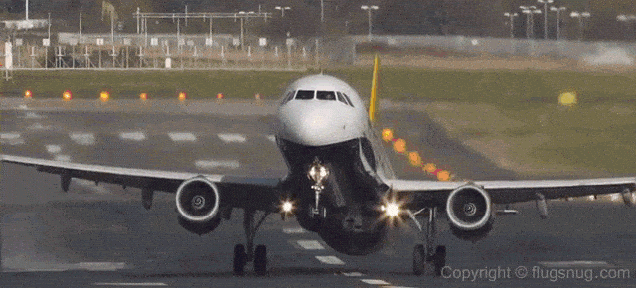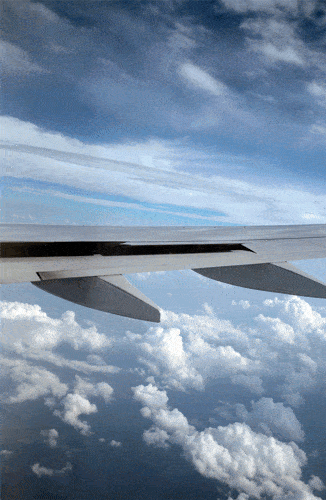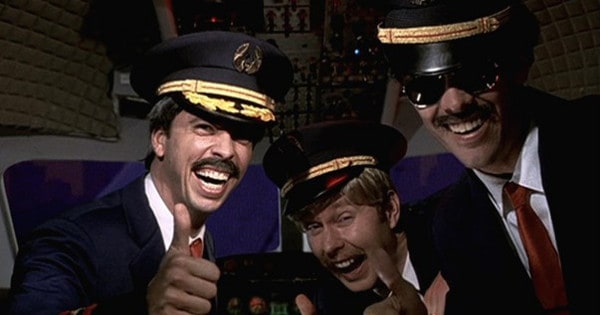We’ve all been on a routine flight when we hear the familiar bing-bong of the PA and get told to fasten our seatbelts for a little turbulence. But what exactly is it and how dangerous is it really?
One airline pilot, speaking anonymously to a UK newspaper, wants to calm fears about turbulence and explain just how awesome pilots and planes really are nowadays. And how rarely stuff like this actually happens.

Basically, there are two types of turbulence, he explains. There’s turbulence associated with bad weather, like rain or snow, which is picked up by the plane’s radar. Then there’s “clear air turbulence”, which is a little trickier.
Clear air turbulence is where intercontinental jet streams that circle the globe collide, and usually happens at high altitudes. When they collide it creates ripples in the air, which makes for a rocky flight.
As the pilot explains, “It’s a judgement call about whether [clear air] turbulence is within safe limits. If it is, we’ll commit to an approach and have a go. If it’s not, we’ll divert to another airfield, where it is safe, or hold off until such time as it is safe to land.”
“We can’t see it on radar, so we tend to rely on aircraft reporting it, such that we can either avoid it, or put the seatbelt signs on.”

The pilot also reiterates just how important it is to put on your seatbelt when the pilot tells you to. He’s fed up with frequent flyers who don’t think they need to take a seat for a little ol’ turbulence, and insists pilots only care about your safety.
“There will be that one time in a hundred when it suddenly becomes really important to be in your seat,” he says. “We always take the conservative side of things, and put the seatbelt signs on early, just in case.”
He also adds that, despite the scary-sounding, invisible, clear air turbulence, pilots are really good at helping each other avoid it, even if they work for different airlines.
“There’s no favoritism or protocol,” he says, “If an Air France airplane is in some turbulence and it’s got a rival airplane behind it, they’ll let us know.”
“There’s a good deal of respect between pilot communities worldwide because that’s how we keep aviation as safe as it can possibly be.”

So what does a pilot do during turbulence? Usually nothing much, as the plane can cope, but the pilot explains that in really, really rough instances: “We have a stall warning and what’s called a stick-shaker, which is the attention-getter for pilots to say that we are stalling the aeroplane right now.”
“Stalling” might sound terrifying, but remember these are hi-tech machines being flown by professionals. “Aircraft like flying, they don’t like falling out of the sky, and you’ve got to try pretty hard to make them do that.”
“You take the autopilot out with a little push button on the control column and you go back to basic flying skills that keep the aircraft safe. That’s why we’re there. That’s why there’s always two of us on the flight deck and why we take the business of flight safety very seriously.”
But for more moderate turbulence, it’s pretty simple for pilots to deal with.
“You can grin and bear it — the aircraft is more than capable of withstanding the loads associated with turbulence — although [it’s] best avoided for passenger comfort [or] you can try flying high, or lower.”
So basically, relax. You’re in good hands.

And finally, if you’ve ever worried about the structural integrity of the plane, the pilot has some (not so) comforting final words when asked what turbulence can do to the airframe.
“Nothing,” he says simply, “Before the airframe gives way, your head will have come off. By the time airframe breaks up you’ll be dead anyway.”
Phew, thanks. We were worried there for a sec.

But seriously, flying is statistically the safest way to travel for a reason. This pilot reckons so many get nervous before a flight is because it’s one of the only situations in modern life where you’re totally out of control.
“It just reminds people that they’re not in control anymore. You then get told where you’re going to sit, you get told when you can sit down and stand up, and that strips away lots of layers of this illusory layers of control that people have.”
“Because in terms of what it might do to you, yes [turbulence] is unpleasant, nobody likes being bounced up and down like that, or very few people do, but it’s not unsafe.”
So now you know your stuff, you know turbulence is nothing to fear and you can be this fabulous (okay, drunk) on your next flight.

You’re welcome.

